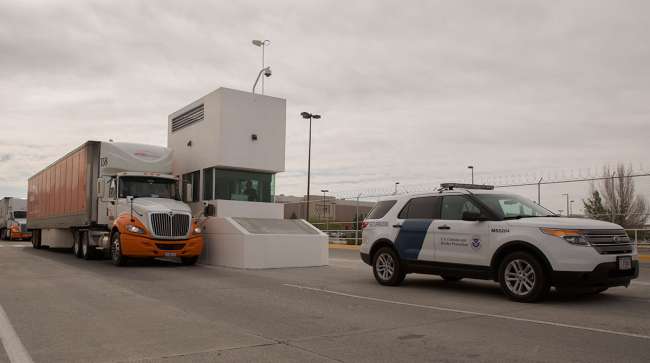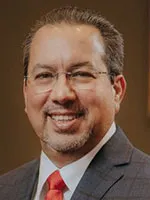Staff Reporter
Donated Project at Mexican Border to Improve Cargo Processing

[Stay on top of transportation news: Get TTNews in your inbox.]
Processing cargo from Mexico is expected to improve at a border land port of entry in Los Indios, Texas, due to a $1.5 million project donated to the federal government in a new partnership announced by U.S. Customs and Border Protection.
A partnership has been created among CBP, the U.S. General Services Administration and Texas government entities Cameron County and the Cameron County Regional Mobility Authority to renovate an export office building in Los Indios at no cost to the government using the CBP’s Donations Acceptance Program.
“We are grateful for the opportunity to pursue public-private partnerships with local entities such as Cameron County and CCRMA to strengthen our ports of entry and the surrounding communities,” said Diane Sabatino, acting executive assistant commissioner for CBP Office of Field Operations. “The renovation of the existing facilities and converting into office spaces to incorporate Unified Cargo Processing will have a significant impact in our ability to expedite legitimate trade and travel in the United States.”
The Los Indios border facility also handles transmigrante cargo, which is a term for goods being transported from the United States through Mexico for resale in Central America.

Sabatino
Tater Ortiz, CBP port director of the Brownsville Port of Entry in Texas, told Transport Topics that CBP officials at the Los Indios Land Port of Entry (also called the Free Trade Bridge at Los Indios) process more than 300 northbound trucks daily from Mexico.
“This DAP [Donations Acceptance Program] improvement project will allow for joint inspections together with Mexico Customs under unified cargo processing that will help facilitate the export processing of transmigrante vehicles destined for third countries, and that will help improve the overall throughput for the port,” Ortiz said.

Ortiz
He said construction is expected to take about six months, and “we anticipate it to be completed in the summer/fall of fiscal year 2024.”
Ortiz noted that the Free Trade Bridge at Los Indios handles a significant volume of transmigrante vehicles.
“During peak periods, especially around the Christmas holidays, CBP processes between 500 and 800 transmigrante vehicles a day for export,” he added.
The Free Trade Bridge at Los Indios is one of the four international bridge crossings (plus an international airport, a rail crossing and a seaport) that comprise the Brownsville Port of Entry.
ERoad's Craig Marris gives advice on carving out a practical, effective road map to a greener and more efficient fleet. Tune in above or by going to RoadSigns.ttnews.com.
Ortiz said that in fiscal 2022, CBP officers processed more than 357,000 northbound commercial trucks at Brownsville Port of Entry, up 9% from the previous fiscal year. This figure included truck traffic at the Free Trade Bridge at Los Indios.
Renovations will be made at Los Indios to provide a workspace for both CBP officers and handling of Unified Cargo Processing to allow the joint U.S-Mexico inspection facility to improve efficiency and binational collaboration. The project also will modernize the area around the export building by adding a perimeter security fence, new concrete and automated controls for a new motorized gate.

Treviño
“I am pleased to announce another collaborative effort once again between GSA, CBP, Cameron County and the CCRMA,” Cameron County Judge Eddie Treviño Jr. said. “The crossing of transmigrants and other traffic will be facilitated through the enhanced inspection of these vehicles by CBP.”
The project to improve the handling of bilateral trade started in 2019 with Cameron County and CCRMA submitting a formal donation proposal. Public-private partnerships are a vital part of CBP’s Resource Optimization Strategy since they enable CBP to provide new or expanded services and infrastructure at domestic ports of entry with nonfederal funding from outside parties.
Jason Shelton, GSA regional administrator, praised the partnership in being able to provide space for CBP operations in Los Indios.
“This project, and many others along the southern border, benefit from the use of the Donations Acceptance Program [by] allowing us to creatively deliver in support of CBP’s mission,” Shelton noted.
Want more news? Listen to today's daily briefing below or go here for more info:


